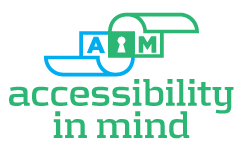Technology evolves at lightning speed- regulations for accessibility, not so much.
Section 508 became effective in 2000- how can 17 year-old regulations apply to today's enormous, ubiquitous electronic information flow? Smart phones, tablets, "always on" connectivity weren't part of life in 2000, and regulations written in the 20th century, essentially "pre-internet", can't be expected to be relevant. Add to that the proliferation of new devices to deliver information; the iPhone came out in 2007, the iPad in 2010-- were certainly not being considered when Section 508 was born. Those of us with "access" consume massive amounts of information electronically, a quantum leap in a few short years. But accessibility is far from universal. Are we getting anycloser to implementing sensible rules to ensure that technology today and in the future is accessible to all?
The original standards requiring electronic and information technology to be "accessible", the 1998 Section 508 amendment to the
Rehabilitation Act of 1973, has an unarguably fair premise: Universal access to the internet and electronic documents, with a mandate to "eliminate barriers in information technology, to make available new opportunities for people with disabilities, and to encourage development of technologies that will help achieve these goals."
It was "mandated" that the rules be regularly reviewed and updated, but guess what? There may have been some reviews, but no updates SINCE 1998. Different government agencies have interpreted the rules and created their own checklists, most notably the HHS checklist which has had no substantial changes since it was originally published in 2007. "Every man for himself" seems to be the guiding principle.
The Access Board has been meeting sporadically over the years, and finally agreed and published an update.
Federal agencies will be required to comply with the revised Section 508 standards beginning on January 18, 2018 (unless budget cuts and de-regulation takes over...).
Here's a brief timeline of how we finally got here:
February 3, 1998 –Original Telecommunications Act Accessibility Guidelines
December 21, 2000 –Original Section 508 Standards
July 6, 2006 –Members named to Advisory Committee (TEITAC)
April 3, 2008 –TEITAC presents final report
March 22, 2010 –Draft proposed rule (ANPRM) to update the Section 508 standards and Telecommunications Act guidelines
December 8, 2011 –Revised draft proposed rule (2nd ANPRM)
February 27, 2015 –Proposed rule (NPRM) published in Federal Register
January 18, 2017 –Final rule published in FR
"Only" 7 years passed from the first drafts of an update to publication in the Federal Register, but 18 years will have passed between the original standards and this much-needed update. Whew....makes me tired to think about it.
Head over to
Section508.gov for their toolkit for the refresh, and let's get accessible and compliant!!! One tiny step in the right direction, I guess we should be cheering.

